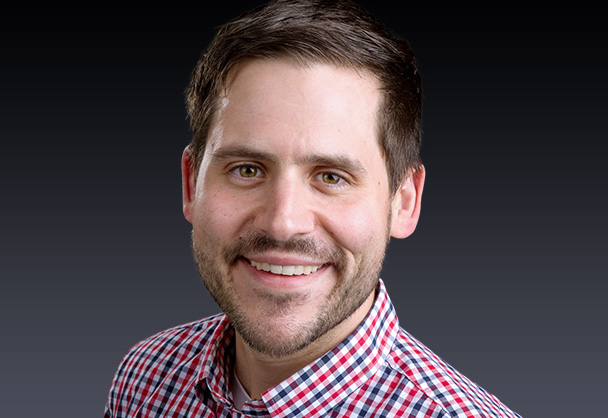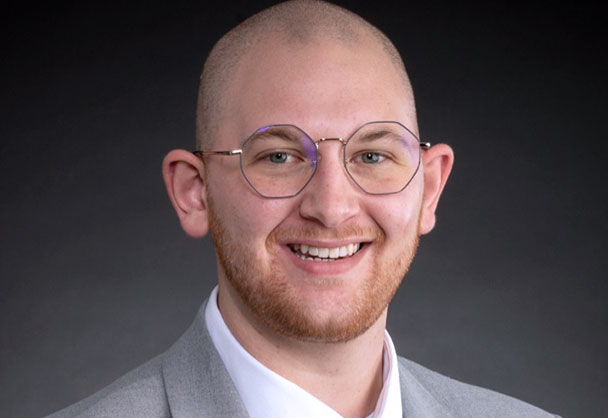Insights and Innovation with Intelligent Pharmacy Data
Podcast Episode 14
Introduction
You can’t manage what you can’t see. When pharmacy leaders at St. Jude Children’s Research Hospital and their teams made their medication inventories visible through intelligent data solutions, they were able to make better decisions for their patients, workflow, compliance, and financial performance.
Participants

David Aguero, PharmD, MSTL, dPLA
Director, Medication Systems and Informatics, Division of Pharmaceutical Services, St. Jude Children's Research Hospital; Assistant Professor with the University of Tennessee's Health Science Center

Eric Andrews
Pharmaceutical Supply Chain Supervisor, St. Jude Children's Research Hospital
Episode Highlights
Q: What is St. Jude's mission?
David Aguero: We are a pediatric oncology research hospital. Our intent is that no patient should receive a bill from St. Jude for their care. Our door is always open to patients who need us.
St. Jude’s mission is to advance cures and the means for the prevention for pediatric catastrophic diseases through research and treatment in order to eradicate pediatric cancer. It's why we exist and we won't stop until we get there. Our vision is to accelerate that progress globally.
We specifically focus on pediatric patients who are enrolled in an investigational or research protocol. We’ll take patients who are within a compassionate scope of care, who are within our geographic area, and who need us. Of course, we'll never deny them treatment. But our purpose is to enroll patients who can participate in our catastrophic disease or oncology-focused research trials.
Q: How does St. Jude's unique mission influence its care delivery model?
David Aguero: What's really interesting about our care delivery model is the complete ownership of our patients’ continuity of care. An example of that is ensuring that patients enrolled in clinical trials have their pharmacogenomics information available to them for the rest of their lives. We want to make sure that information is available to them and shared through our health record with other health records, with other platforms, for the entirety of their health journey.
Q: How is pharmacy organized to support St. Jude’s innovative care delivery model?
David Aguero: The Department of Pharmacy and Pharmaceutical Sciences has two main arms. The research-driven arm is Pharmaceutical Sciences, and the care-driven arm is Pharmaceutical Services. We also have a clinical pharmacokinetic therapeutic drug monitoring laboratory that sits between the two groups.
Within Pharmaceutical Services, there are five major service lines: within outpatient operations, there is specialty pharmacy, home infusion pharmacy, and ambulatory care pharmacy. For inpatient pharmacy, we have an infusion center where patients can come and receive treatment, and multiple satellite pharmacies that service acute care areas.
We also have two clinical pharmacy service lines. One is a medication safety service line comprised of prescribing practitioners who serve with the care team and who follow patients throughout their treatment. The other is a system service line focused on supply chains, automation, and informatics to make the most of our data and to be aggressive with it in terms of making business decisions.
Q: How is your medication supply chain organized?
Eric Andrews: The largest-dollar-value-items are chemotherapy drugs, but from a volume perspective, most drugs we manage are maintenance medications. At any given time, we keep around $8 million on inventory, and we manage an annual drug spend of around $61 million.
As David stated, we manage both an inpatient pharmacy and an outpatient pharmacy. One carousel manages inpatient inventory and one carousel manages outpatient inventory. We also have several open shelving concepts. All inventory is managed centrally with intelligence solutions, which helps give us a high visibility into our medication supply chain.
Q: How does the research aspect impact your medication management processes?
David Aguero: At any given time, we support 40 to 60 different drug trials. That's a lot of inventory, client information, and patient care to deliver. Also, as we own the continuity of care for patients as they transition from outpatient to inpatient and back again, it’s critical to be able to manage that complexity.
The investigational medication is supplied by the drug trial sponsor, but there are also commercial medications that are needed to support those investigational trials: drugs such as antibiotics, pain medications, and so forth. We ensure those medications are provided so patients can participate in the trial.
As patients continue on their protocols, some of which can go on for years as outpatients, that often means mailing medications to patients wherever they go.
Q: Do you also have challenges faced by other health system pharmacies, such as labor shortages, medication shortages, and rising costs?
Eric Andrews: Yes, our medication management processes are affected by all the same issues. Our supply chain is the same supply chain that every other hospital and healthcare system uses. We hyper focus on things like rising costs, just due to the nature of our organization and the fact that we rely strictly on donors to operate. We really do try to be the best stewards financially while also providing the best care possible for patients.
Drug shortages have been a continuing issue. The pandemic has increased the magnitude of drug shortages to a level I think none of us has really seen before. At St. Jude, we’re actively monitoring 60 items that we identify as backorder, with around a quarter of those items being critical items.
For example, every strength of potassium chloride vials is on shortage. It's a high-use item that most of our kiddos get, and the lack of supply threatens their care. We identified a workaround using pre-mixed bags of potassium chloride that we can use to deliver this medication. It was a great team effort, but it was a lot of extra work.
Q: How are you using technology to address those drug inventory challenges?
Eric Andrews: We can't meet our goal of ensuring our patients have the best care possible unless our internal stakeholders have what they need to have to do their job. Some of our biggest wins have been with nurses and their use of automated dispensing cabinets and with the anesthesia team using anesthesia workstations. The technology is delivering their must-haves and also delivering visibility into drug utilization, so we’re able to manage inventory at a higher level than we have before.
David Aguero: Anesthesia carts also give us real-time visibility into our inventory across the facilities. It allows us to see what's being used, what’s not being used, and really reinforces collaboration with our anesthesia department.
Another example is that only 20% of our inpatient surgeries are performed in a standard operating room. Conscious sedation is very common here at St. Jude. Our certified registered nurse anesthetists (CRNAs) rely on having ready access to those medications. So for the size of our facility, we deploy more anesthesia carts than you might expect, so we can ensure medications are available at the point of care for CRNAs to be able to support conscious sedation.
Q: You mentioned several times the importance of inventory visibility. Why is that so important?
Eric Andrews: I think one of the biggest wins that we've been able to see from an informatics perspective, from an inventory management perspective, is not only that perpetual inventory that we're seeing in our warehouse, in the cabinets, in the anesthesia workstations, in our central pharmacies, but also the amount of data that comes with that, being able to access that data in near-real-time, and then being able to use that data to help empower our staff to make the system work for them.
David Aguero: Additionally, when we think about Omnicell’s intelligence solutions, from my perspective, while it's not our only cost savings initiative related to inventory management, it is extremely valuable in looking for low-hanging fruit that we may have otherwise missed. I think between April and November of this year we saved more than $300,000 in real cost. At St. Jude where we are covering the cost of care for our patients, that’s money we can roll back into taking excellent care of our patients.
We recently were asked to give an update to our board. It was a spot opportunity. We had about five hours to get a report together.
But our team was enough in sync with itself that we were able to pull together a summary of drug shortages from the past year, the financial impact, the ROI associated with mitigating shortages, and the financial impact on patient care. Our chief financial officer really appreciated it, and that information made it to our board, reflecting very positively on our departments’ efforts to support patient care.
DISCLAIMER
The Future of Pharmacy Podcast is produced and distributed by Pharmacy Podcast Network. The views and opinions expressed in this podcast are those of the authors and do not necessarily reflect the official policy or position of any other agency, organization, employer or company. Assumptions made in the analysis are not reflective of the position of any entity other than the author(s). These views are always subject to change, revision, and rethinking at any time and may not be held in perpetuity.
 Back to Podcast
Back to Podcast

